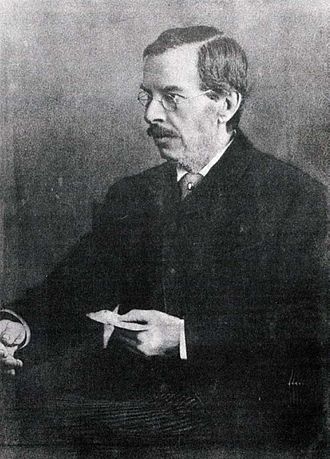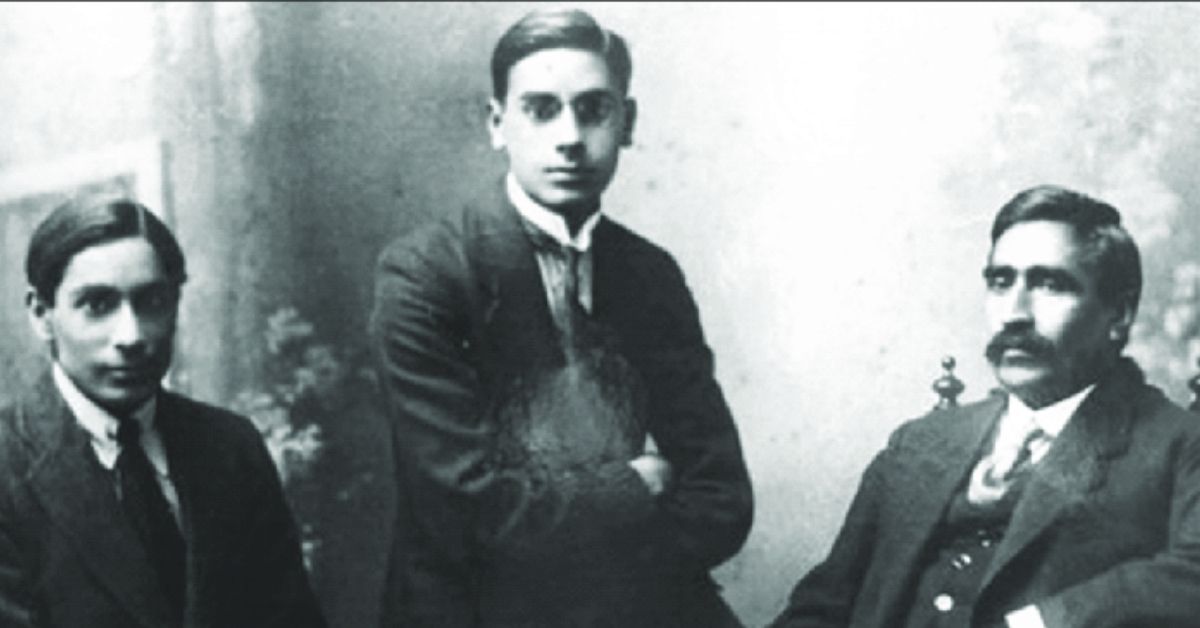Today, cities such as Bengaluru and Hyderabad are considered to be some of the finest and most notable science hubs in India. However, lesser-known is the story of the undivided state of Punjab, which produced some of the greatest stalwarts in the field, including Har Gobind Khorana and Abdus Salam. Even lesser known is the story of Ruchi Ram Sahni, a scientist, educationist, meteorologist and physicist, and father of paleobotanist Birbal Sahni.
In 2018, Neera Burra, sociologist and great-granddaughter of Sahni, edited and published ‘A Memoir of Pre-Partition Punjab’, detailing the great scientist’s life as part of the first generation in the state to be educated in English, and his life amid the changing political and social landscape in British India. Beyond his scientific contributions, Sahni was a staunch secularist and opponent of orthodox Hinduism, for which he faced severe ostracism.
Before we delve more into his contributions in the field of meteorology and science, it would be important to understand the humble beginnings from which he came.
A ‘Native’ Amid The Whites
Sahni was born in 1863 in Dera Ismail Khan (now in Pakistan’s Khyber Pakhtunkhwa Province), undivided Punjab to Karam Chand Sahni, a merchant, and Gulab Devi. While initially well-off, the family’s business hit a snag, forcing them into a situation of financial instability, and leaving young Sahni to fend for himself.
Hard-working and with a strong drive to study, Sahni would sometimes travel 50 miles at the age of 16 to study in the educational institute of his choice. After completing his schooling at a Lahore institute, he passed his BA Honours from Punjab University. After graduating, he joined the India Meteorological Department’s Shimla office, at only 22.
Sahni was the first—and at the time, the only—Indian scientist at IMD. He worked as an assistant meteorological reporter under Henry Francis Blanford, a British meteorologist and palaeontologist. He was entrusted with the responsibility of preparing daily weather reports based on other stations across India and Burma.

Some time into his stint at IMD, Blanford, who would otherwise read Sahni’s reports before they were released to the press, had instead entrusted Sahni with 100% of the responsibility, from filing to releasing. As Burra writers in her book, some tensions were mounting because a “native” had been given such an important assignment. In his memoir, Sahni describes this task as his “coming of age”, combined with a feeling of both fear if something were to go wrong, as well as pride that he could finally show his worth.
Sahni also detailed how he was told, time and again, that perhaps a European would be better suited for this job. He was publicly called out in The Pioneer, India’s then-premier publication, about how one of his reports had missed out on forecasting weather, which, the report said, he should have given based on the available data. The reporter had opined that “the time had not come for a ‘native’ to be appointed for a scientific post”. The article also said that this Daily Weather Report had been sent to other countries, including Russia, who would have little regard for the Government of India were they to realise that someone of brown skin had been appointed for a post of this significance.
Saving Lives With His Quick Thinking
This virulent incident, unfortunately not an isolated one, becomes important when we recall how one incident in 1885 proved to be a defining moment in Sahni’s early career but was marred by the bias of the then government. In September that year, the young scientist entered his office and called for the weather reports as usual. On inspecting the report, he found that the Diamond Harbour had reported an unusual decline in atmospheric pressure. There was nothing in the other reports to explain this sudden change.
Immediately, Sahni sent a telegram to the Observer at the harbour, asking them to send in their latest readings, which confirmed his suspicion that a big storm was approaching the east coast. He ordered the team there, as well as neighbouring stations, to continue sending updates every 30 minutes, and read up on other big storms that had previously hit various coasts. With all his superiors in Calcutta and no one left to consult, Sahni took it upon himself to make the forecast public — a timely warning that saved the ships present at the coast at the time.
This storm was to be the False Point Cyclone of 22 September 1885, one of the most severe ones to hit the Bay of Bengal in its entire history. A Category 5 storm, it generated a surge as high as seven metres, and wind speeds as fast as 250 km/hr. While no official casualty figure was recorded, later accounts say that around 5,000 people lost their lives. However, this damage to lives and property was drastically reduced thanks to the quick thinking of a young scientist who existed in the lowest rungs of official and social hierarchy.
Fulfilling his duty, Sahni wrote to Blanford, alerting him of what had just happened. Deeply upset at the news, the senior scientist immediately approached Alexander Pedler, a reporter of provincial meteorology for Bengal, and professor of chemistry at Presidency College. Pedler used to publish the weather reports filed in Shimla almost verbatim, and this time, he had not looked at them well enough to be aware of any storms.
Pedler sent out orders to stations around the cyclone-hit region to repeat the telegrams they had been sending to Sahni, by which time, the storm had severely increased in its intensity and had hit land at False Point. Now, Blanford and Pedler were thoroughly convinced that Sahni’s predictions had been more than correct and that his timely actions had helped save thousands of lives and property.
Later, Pedler would write a thoroughly detailed research paper titled ‘False Point Cyclone’, with references to the predictions. However, Sahni never found any mention in this paper, and his contribution only came to light once his memoir was published. While today, India’s scientific capabilities are sung across the world, in the colonial era, a “native” was not deemed worthy enough for rulers of the time to cite the contributions of these unsung heroes, one of them being Sahni.

A Champion of Science and Equality
Sahni’s first love had always been teaching, and he took up a job in Government College Lahore. While he spent three decades teaching there, he was eventually superseded by an Englishman, and quit. He also co-founded the Punjab Science Institute with his Government College colleague J Campbell Oman, to popularise science through public lectures and demonstrations in vernacular language.
In an era much before PowerPoint presentations came into existence, he invented a technique to deliver lectures using slides, which he did by dipping glass plates in a solution of gum, and letting it dry. He would then trace the required figures, maps and data on these slides and project the images on the wall with a lantern.
It was Sahni who mentored Shanti Swarup Bhatnagar, who later founded the Council of Scientific & Industrial Research (CSIR), and helped the renowned chemist attain a scholarship to study abroad in his budding days.
Besides his scientific contributions, Sahni was an active member of the Brahmo Samaj and was heavily involved in the political movements of his state. He was an active opponent of caste and religious divide in the country. “…It required no small courage even to make the verbal profession of the ‘brotherhood of man’ and to acknowledge openly that Mohammad, Christ and all other great teachers of humanity were as worthy of homage and reverence as Ram or Krishnan…,” he wrote in his memoir, adding that there were many times that those who came to listen to his lectures would later leave saying he and people of his school of thought were “denationalised” and had “no faith of their own”. He often faced abuse for dining with “outcasts” who had chosen to embrace the equality of different faiths.
Loud and clear in his dream of achieving a better future for the subjugated, his contributions to the field of science and promoting Punjab as a hub of stalwarts in the field have remained more or less unspoken. He is most known for being the father of the famed Birbal Sahni, and less for his quick thinking, empathy for fellow Indians, and his contributions to scripting a better history for colonial India.
Edited by Yoshita Rao
No comments:
Post a Comment